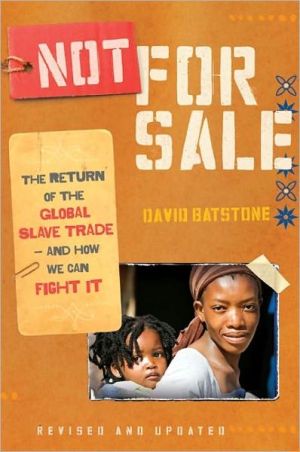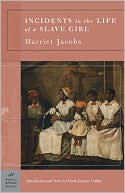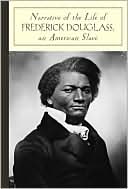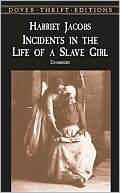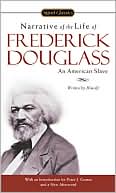Not for Sale: The Return of the Global Slave Trade--and How We Can Fight It
Human trafficking generates $32 billion annually and enslaves over 30 million people, half of them children. Award-winning journalist David Batstone, whom Bono calls "a heroic character," profiles the new generation of abolitionists who are leading the movement. This groundbreaking global report is now updated with the latest findings, new stories, and statistics that highlight what is being done to end this appalling epidemic—and how you can join the movement.
Search in google:
Human trafficking generates $31 billion annually and enslaves 27 million people around the globe, half of them children under the age of eighteen. Award-winning journalist David Batstone, whom Bono calls "a heroic character," profiles the new generation of abolitionists who are leading the struggle to end this appalling epidemic.
Not for Sale\ The Return of the Global Slave Trade--and How We Can Fight It \ \ By David Batstone \ HarperCollins Publishers, Inc.\ Copyright © 2007 David Batstone\ All right reserved.\ ISBN: 9780061206719 \ \ \ Chapter One\ Shining Light into the Sexual Darkness: Cambodia and Thailand\ "I paid good money for you!"\ How Srey Neang loathed those words. They made a claim on her, excusing any abuse, justifying every chore.\ The old woman bought her not long after she turned seven. Srey Neang's parents were struggling to care for five children in a camp for internally displaced Cambodians. The camp was situated near the border with Thailand where food was scarce and jobs nonexistent. The old woman and her son came to the camp seeking a young girl to be a house servant. Her parents sacrificed one child for the survival of her siblings.\ Memories of her family now lurk in shadows. She recalls playing in a dusty field with other children. Are those kids rolling on the ground her brothers and sisters? Rumors that her parents were Khmer Rouge militants follow Srey Neang. Of course, pinning that history on a child could be a form of manipulation. A daughter of the Khmer Rouge merited a tragic karma.\ The old woman lived in a small structure; a single space served as bedroom, kitchen, and living room. At night, Srey Neang pulled out a mat to sleep on a knotty wood floor in the corner of the house.\ She cooked the woman's meals, bathed her, washed clothes, scrubbed the floors, andperformed any other chore demanded of her. Her master demonstrated neither affection nor malice; she expected only obedience. Srey Neang was never once addressed by name. "Hey you, get me some water," the woman would say, or "Girl, go sweep the floor." Did the old woman know her name? Some days Srey Neang whispered her own name softly to herself simply so that she would not forget.\ Three years passed, and then her master turned very ill. Some days the woman did not even rise from the bed. During that period Srey Neang rarely left the house; morning and evening she tended to the dying woman's needs. The loneliness felt heavy at times.\ Once the woman died, her son acted decisively to consolidate his mother's property. "Pack your stuff," he ordered Srey Neang no more than an hour after burying his mother. "You now will serve my family."\ Srey Neang grabbed the few clothes she owned, rolled them up in the sleeping mat, and departed the old women's home for the final time. The son lived on the other side of the village, perhaps a walk of fifteen minutes. Though short in distance, the journey transported her to a new and dangerous universe.\ Srey Neang sensed the rotten air as soon as she arrived. The wife of her new master treated her gruffly, as if to blame Srey Neang for an unwanted intrusion into her home.\ She now had four people to serve--the married couple and their two young children. Srey Neang worked steadily from the break of day until the final member of the family fell asleep at night. Yet no effort proved good enough for her owners. Both husband and wife beat her with a reedy switch for the slightest offense: the porridge was too salty, or the front door of the house had been left open. Often they beat Srey Neang for things she did not even do.\ No matter, it was their right. After all, they would declare, "We paid good money for you!"\ A Recipe for Mass Vulnerability\ In June 2006, Cambodia was ranked as one of the worst countries in the world for human trafficking. The report card, published annually by the U.S. State Department, pulled no punches: "Cambodia is a source, destination, and transit country for men, women, and children trafficked for the purposes of sexual exploitation and forced labor."1 The report further declares that "corruption, lack of training and funding for law enforcement, and a weak judiciary" stand in the way of Cambodia "making significant efforts" to eliminate its slave trade.\ Unfortunately, Cambodia does not stand out as an exception in Southeast Asia. Sex traffickers in Thailand, Vietnam, Laos, and Burma also move women and children across borders with brazen disregard for law enforcement--and oftentimes with their help! The majority of their victims end up staying in Southeast Asia to service a robust sex industry. The sex bars and massage parlors in Phnom Penh, for instance, are highly populated with young girls from Laos and Vietnam. Southeast Asia is one of the world's largest exporters of sex slaves as well to brothels in Japan, China, Australia, Europe, and the United States.\ So why does sex slavery thrive so in Southeast Asia? Four powerful forces collude to rip apart stable communities in the region: 1) devastating poverty; 2) armed conflicts; 3) rapid industrialization; 4) an exploding population growth. Though political scientists and economists may reach no definitive consensus about which of these social forces is paramount, they all would concur that Southeast Asia is passing through a period of radical transition. Whenever a society faces seismic changes, the powerless suffer most.\ The impoverished masses of Cambodia represent the economic challenge. At least one in three of Cambodia's 15 million people live below the poverty line today. Cambodian women, above all, do not get the chance to study formally or learn vocational skills; 41 percent of the country's adult women are illiterate.2 While finding a job in Cambodia can be difficult under any circumstances, an uneducated and impoverished woman does not fit the profile that most legal employers seek to hire. Desperate to secure the well-being of their parents or perhaps their own children, a poor woman can become easy prey for a trafficker.\ The present situation in Burma--or Myanmar under the current regime--demonstrates the far-reaching impact of armed conflict. A military dictatorship maintains a fragile hold over a plethora of tribal groups and warlords, each of whom fight for their autonomy. Violent conflict can erupt at any given moment. As a result, Burmese families fleeing the violence or looking for a more sustainable livelihood pour into neighboring countries.\ \ \ Continues... \ \ \ \ Excerpted from Not for Sale by David Batstone Copyright © 2007 by David Batstone. Excerpted by permission.\ All rights reserved. No part of this excerpt may be reproduced or reprinted without permission in writing from the publisher.\ Excerpts are provided by Dial-A-Book Inc. solely for the personal use of visitors to this web site. \ \
